From sumptuous engravings to stick-figure sketches, Passover Haggadahs − and their art − have been evolving for centuries
Published in News & Features
The Jewish festival of Passover recalls the biblical story of the Israelites enslaved by Egypt and their miraculous escape. During a ritual feast known as a Seder, families celebrate this ancient story of deliverance, with each new generation reminded to never take freedom for granted.
Every year, a written guide known as a “Haggadah” is read at the Seder table. The core text comprises a description of ritual foods, the story of the Exodus, blessings, commentaries, hymns and songs. The word Haggadah – “telling,” in Hebrew – was derived from Exodus 13:8, a verse which instructed the Israelites to commemorate their liberation and tell the story to their children.
Even though the ancient festival that became Passover has been celebrated since the biblical period, the complete text of the Haggadah emerged only in the eight to ninth centuries. And it was not until the 14th century that fully developed, sumptuously illuminated versions emerged, used by the Jewish communities of Germany, Italy and Spain. Medieval editors integrated decorative borders, such as fantastical, beastlike creatures borrowed from the wider culture.
This artistic license, together with slight modifications to the text over time, meant that the Haggadah became both a mirror and a commentary on the societies in which they were produced. Here at the University of Florida’s Price Library of Judaica, where I am curator and a medieval Hebrew scholar, we have hundreds of Haggadahs – each one a window into how Jews in a particular time and place adapted the telling of the Passover story.
One of the greatest examples our library has of this blending of cultures was printed in Amsterdam in 1695.
The Amsterdam Haggadah was illustrated by Abraham Bar Yaakov, a German pastor who converted to Judaism. Abandoning the standard use of woodcut images, Bar Yaakov created a series of copper engravings based on Bible illustrations by the Swiss engraver Matthäus Merian the Elder. In addition, he incorporated a pull-out map of the route of the Exodus and an imaginative rendering of the Temple in Jerusalem.
Bar Yaakov also added an image of the “four sons” standing together – one of the many elements of Haggadahs designed to engage and instruct children sitting through the long Seder meal. Each son represents a different type of child, described by their attitude toward Passover: wise, wicked, silent and one who does not even know how to ask questions about the holiday.
In medieval Haggadahs, the wicked son was usually portrayed as a combatant – the personification of evil for European Jews who had suffered recurrent mob raids and violent expulsions. In Bar Yaakov’s rendering, the wicked son is a Roman soldier precariously balanced on one foot and looking back toward the wise son, who is depicted as Hannibal, the Carthaginian general who battled Rome in the third century B.C.E.
The second edition of this Haggadah was printed with additional engravings in 1712 by Solomon Proops, founder of an acclaimed Dutch Jewish printing house. The text, traditionally written in Hebrew and Aramaic, included instructions in Yiddish and Ladino, the everyday languages for Jews in Europe. The Ladino translations were specifically geared toward Sephardi Jews who arrived in the Netherlands after being expelled from Spain and Portugal, as well as Portuguese “Conversos” returning to Judaism after their ancestors had been forced to convert to Catholicism.
The Amsterdam Haggadah proved to be incredibly influential on later versions, with its illustrations copied into the modern era.
By the 20th century, Haggadahs had been adapted and translated to meet the needs of diverse Jewish communities around the world, including various religious denominations – Reform, Conservative, Orthodox – or political, social and labor groups, such as Zionists or socialists. The Haggadah’s key theme of freedom from oppression was tailored to address contemporary situations and viewpoints.
Modern Haggadah illustrations also reflected developments in the art world. In 1920s Berlin, a Jewish art teacher, Otto Geismar, reinterpreted the story of the Exodus using plain, black-and-white, modernist “stick figures” – another Haggadah in our collection.
Despite their minimal lines, the figures are all expressive. Geismar even injected elements of humor: A child is shown asleep at the table, and in another scene a family of stick figures is engaged in animated conversation and debate. In his depictions of ancient Israelite slaves, stick figures appear especially burdened with heavy loads on their backs. He also divided the Hebrew text into more easily readable sections using eye-catching, black-and-white decorative borders.
The striking simplicity of the design, aimed primarily at children, gained great popularity, and his work was reprinted in multiple German and Dutch editions.
There was growing demand for different printed versions, as Jews around the world adapted the traditional Haggadah. Meanwhile, some suppliers sensed an opportunity to adapt it for their own needs. Thus rose a phenomenon known as the commercial Haggadah: the product of astute companies realizing the power of advertising their wares in a book dedicated to the art of “telling.”
The most famous of these is the Maxwell House Haggadah from 1932, which was distributed freely with every can of coffee purchased.
In 1938, the Schapiro House of Kosher Wines caught on. The company, whose flagship store was on New York’s Lower East Side, produced a Haggadah with an English translation and illustrations borrowed from the Amsterdam Haggadah. Owner Sam Schapiro savvily linked his products to the Seder, during which participants drink four small cups of sacramental wine. Wine, seen at this point as a luxury item, also symbolized freedom.
Just in case there were any doubts about advertising alcohol a mere five years after Prohibition, when sacramental wine was difficult to access, Schapiro’s Haggadah made the case for wine’s “health values.” Across two pages at the back of the book, the editor describes in English and Yiddish the supposed efficacy of wine against a host of maladies, including typhoid fever, depression and even obesity.
Schapiro’s Haggadah fulfilled the commandment to relate the story of the Exodus for a new generation – but the opening pages also provide a tribute in Yiddish to Sam Schapiro’s 40-year-old company. Here Schapiro’s is praised for being the place where religious men and intellectuals alike could get together over a good glass of wine.
Commercial Haggadahs were not expected to become venerable family heirlooms. Rather, they provided a handy, affordable way for Jewish families of lesser means to participate in the annual ritual of coming forth out of bondage – another expression of freedom.
This article is republished from The Conversation, a nonprofit, independent news organization bringing you facts and analysis to help you make sense of our complex world.
Read more:
How a coffee company and a marketing maven brewed up a Passover tradition: A brief history of the Maxwell House Haggadah
Rosh Hashana and Yom Kippur are times for soul-searching, but not on your own – community has always been at the heart of the Jewish High Holidays
Rebecca J.W. Jefferson does not work for, consult, own shares in or receive funding from any company or organization that would benefit from this article, and has disclosed no relevant affiliations beyond their academic appointment.










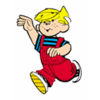
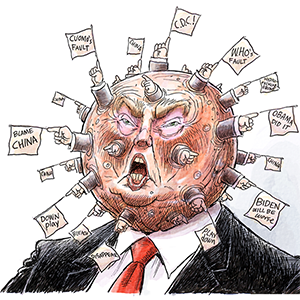
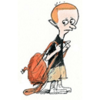
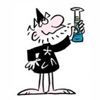
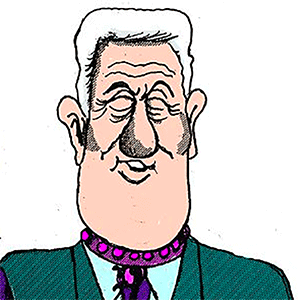
Comments